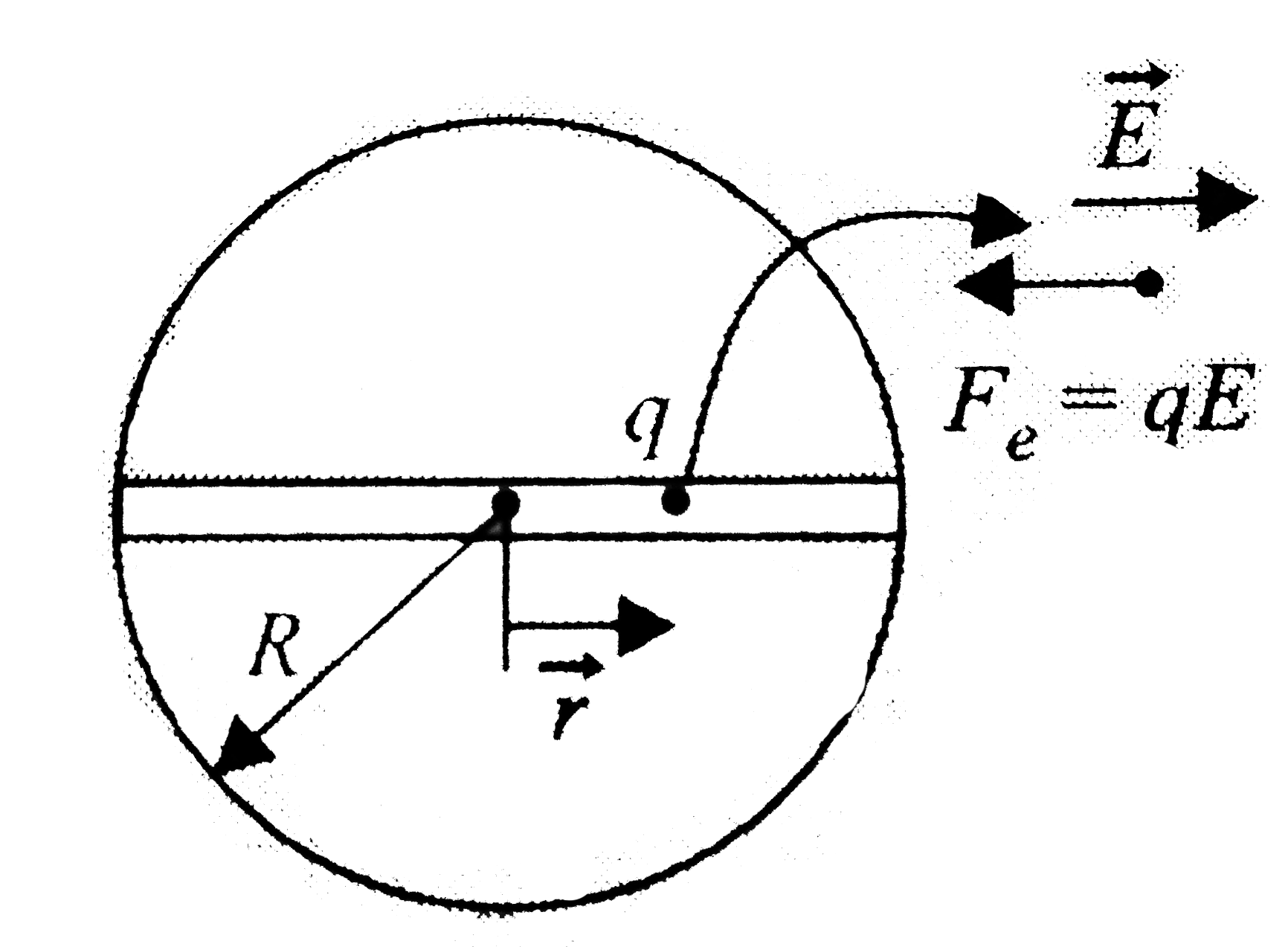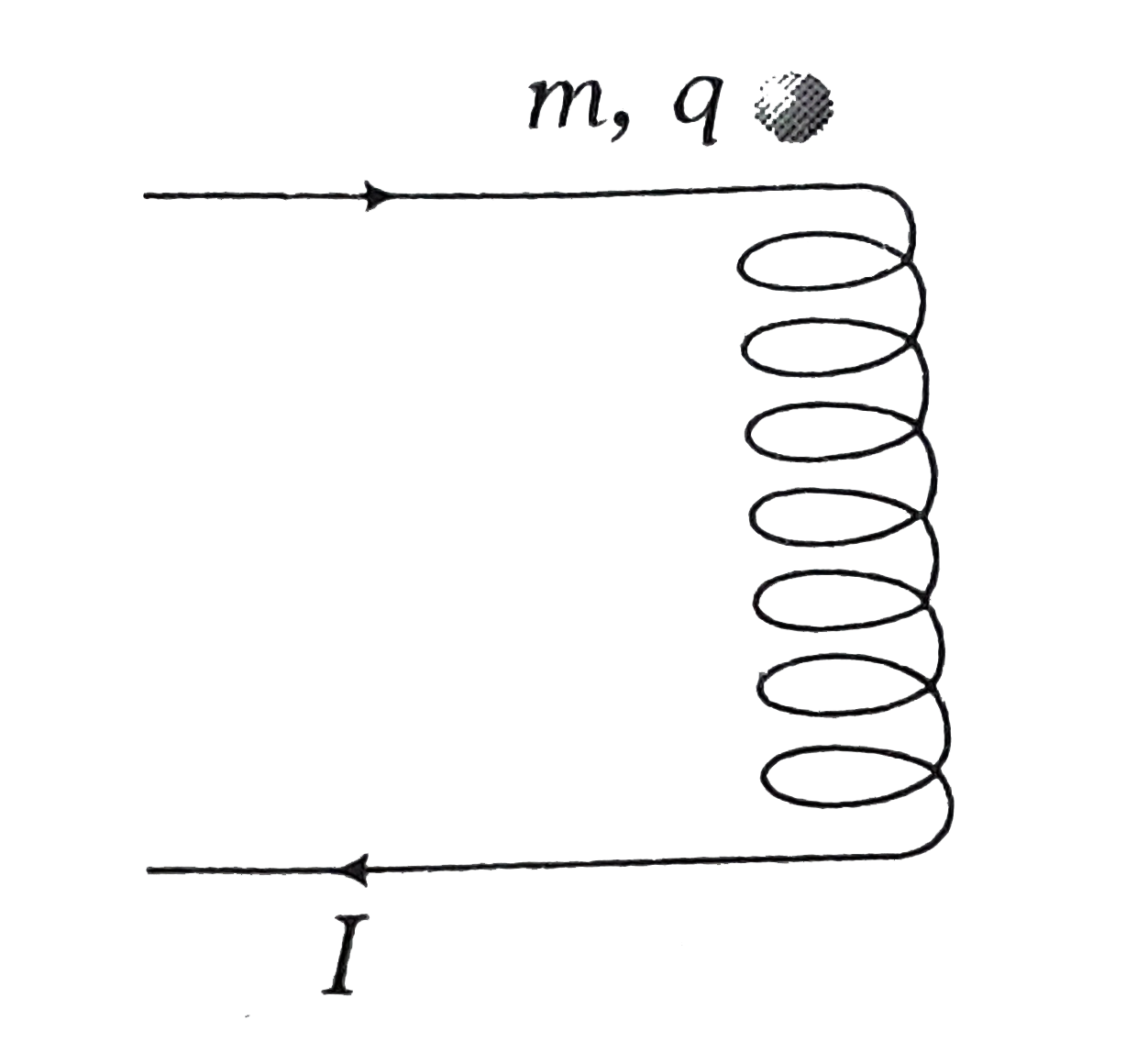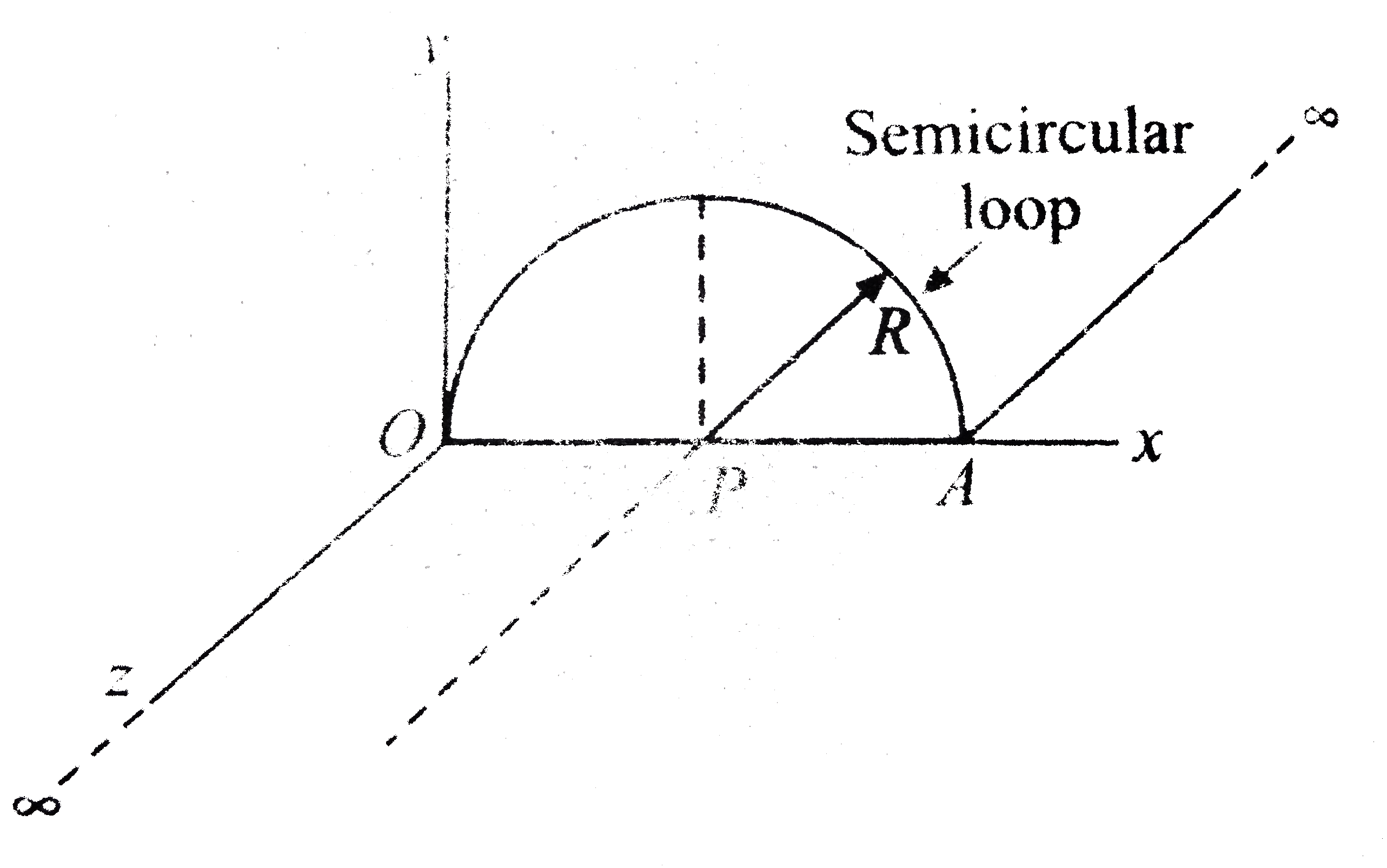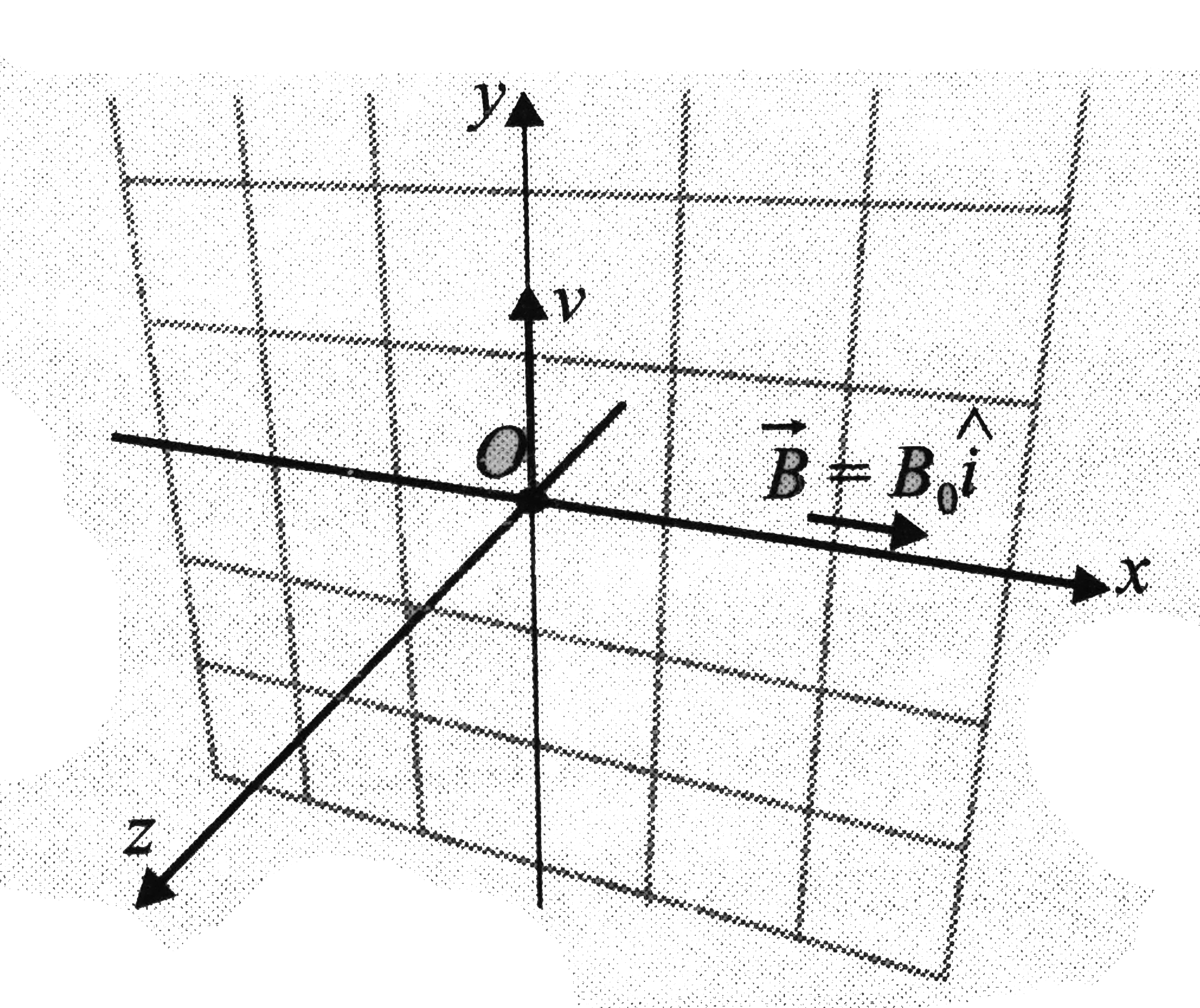A nonconducting disk of radius a and uniform positive surface charge density σ is placed on the ground, with its axis vertical. A particle of mass m and positive charge q is dropped, along the axis of the disk, from a height H with zero initial velocity. The particle has q/m=4ε0g/σ.
(i) Find the value of H if the particle just reaches the disk.
(ii) Sketch the potential energy of the particle as a function of its height and find its equilibrium position.
To solve the problem step by step, we will break it down into two parts as per the question.
Part (i): Finding the value of H if the particle just reaches the disk
1. Understanding the System:
- We have a non-conducting disk of radius a with a uniform positive surface charge density σ.
- A particle of mass m and charge q is dropped from a height H with zero initial velocity.
2. Using Conservation of Energy:
- The potential energy lost by the particle when it falls from height H is converted into electric potential energy as it approaches the disk.
- The gravitational potential energy at height H is given by:
Ug=mgH
- The electric potential energy when the particle is at the disk can be expressed as:
Ue=qΔV
- Here, ΔV is the potential difference between the height H and the potential at the disk.
3. Calculating the Electric Potential:
- The potential V at a height h above the center of a uniformly charged disk is given by:
V(h)=σ2ϵ0(√a2+h2−h)
- At height H, the potential is:
V(H)=σ2ϵ0(√a2+H2−H)
- At the disk (height = 0), the potential is:
V(0)=σa2ϵ0
4. Finding the Potential Difference:
- The potential difference ΔV is:
ΔV=V(0)−V(H)=σa2ϵ0−σ2ϵ0(√a2+H2−H)
5. Setting Up the Energy Equation:
- By conservation of energy:
mgH=qΔV
- Substitute ΔV:
mgH=q(σa2ϵ0−σ2ϵ0(√a2+H2−H))
6. Substituting qm:
- Given qm=4ϵ0gσ:
mgH=4ϵ0gσ(σa2ϵ0−σ2ϵ0(√a2+H2−H))
- Simplifying gives:
H=2a3
Part (ii): Sketching the potential energy and finding equilibrium position
1. Potential Energy Expression:
- The total potential energy U(h) at height h is given by:
U(h)=Ug+Ue=mgh+qV(h)
- Substitute V(h):
U(h)=mgh+q(σ2ϵ0(√a2+h2−h))
2. Finding the Equilibrium Position:
- To find the equilibrium position, we need to set the derivative of potential energy with respect to height h to zero:
dUdh=mg+qdVdh=0
- Calculate dVdh and set the equation to zero to find h.
3. Sketching the Graph:
- The graph of potential energy U(h) will show a minimum at the equilibrium position.
- As h approaches zero, the potential energy is at a maximum due to gravitational potential energy.
- As h increases, the electric potential energy becomes significant, leading to a minimum at equilibrium.
- We have a non-conducting disk of radius a with a uniform positive surface charge density σ.
- A particle of mass m and charge q is dropped from a height H with zero initial velocity.
- The potential energy lost by the particle when it falls from height H is converted into electric potential energy as it approaches the disk.
- The gravitational potential energy at height H is given by:
Ug=mgH
- The electric potential energy when the particle is at the disk can be expressed as:
Ue=qΔV
- Here, ΔV is the potential difference between the height H and the potential at the disk.
- The potential V at a height h above the center of a uniformly charged disk is given by:
V(h)=σ2ϵ0(√a2+h2−h)
- At height H, the potential is:
V(H)=σ2ϵ0(√a2+H2−H)
- At the disk (height = 0), the potential is:
V(0)=σa2ϵ0
- The potential difference ΔV is:
ΔV=V(0)−V(H)=σa2ϵ0−σ2ϵ0(√a2+H2−H)
- By conservation of energy:
mgH=qΔV
- Substitute ΔV:
mgH=q(σa2ϵ0−σ2ϵ0(√a2+H2−H))
- Given qm=4ϵ0gσ:
mgH=4ϵ0gσ(σa2ϵ0−σ2ϵ0(√a2+H2−H))
- Simplifying gives:
H=2a3
- The total potential energy U(h) at height h is given by:
U(h)=Ug+Ue=mgh+qV(h)
- Substitute V(h):
U(h)=mgh+q(σ2ϵ0(√a2+h2−h))
- To find the equilibrium position, we need to set the derivative of potential energy with respect to height h to zero:
dUdh=mg+qdVdh=0
- Calculate dVdh and set the equation to zero to find h.
- The graph of potential energy U(h) will show a minimum at the equilibrium position.
- As h approaches zero, the potential energy is at a maximum due to gravitational potential energy.
- As h increases, the electric potential energy becomes significant, leading to a minimum at equilibrium.
Topper's Solved these Questions
- BOOK - CENGAGE PHYSICS ENGLISHCHAPTER - ELECTRIC POTENTIALEXERCISE - Exercise 3.123videos
ELECTRIC POTENTIAL
- BOOK - CENGAGE PHYSICS ENGLISHCHAPTER - ELECTRIC POTENTIALEXERCISE - Exercise 3.29videos
ELECTRIC POTENTIAL
- BOOK - CENGAGE PHYSICS ENGLISHCHAPTER - ELECTRIC POTENTIALEXERCISE - DPP 3.515videos
ELECTRIC POTENTIAL
- BOOK - CENGAGE PHYSICS ENGLISHCHAPTER - ELECTRIC FLUX AND GAUSS LAWEXERCISE - MCQ s38videos
ELECTRIC FLUX AND GAUSS LAW
- BOOK - CENGAGE PHYSICS ENGLISHCHAPTER - ELECTRICAL MEASURING INSTRUMENTSEXERCISE - M.C.Q2videos
ELECTRICAL MEASURING INSTRUMENTS
Similar Questions
A uniform cube of mass m and edge a moves on a horizontal surface along the positive x-axis, with initial velocity v0. Then
View SolutionA particle of mass m and charge q is thrown in a region where uniform gravitational field and electric field are present. The path of particle:
View SolutionA smooth chute is made in a dielectric sphere of radius R and uniform volume charge density. ρ. A charge particle of mass m and charge -q is placed at the centre of the sphere. Find the time period of motion of the particle?
 View Solution
View SolutionA long solenoid carrying a current I is placed with its axis vertical as shown in the figure. A particle of mass m and charge q is released from the top of the solenoid. Its acceleration is (g being acceleration due to gravity)
 View Solution
View SolutionAn infinte wire having linear charge density λ is arranged as shown in fig. A charge particle of mass m and charge q is released charged q is released from point P. Find the initial acceleration of the particle just after the particle is released.
 View Solution
View SolutionA circular ring of radius R with uniform positive charge density λ per unit length is located in the y z plane with its center at the origin O. A particle of mass m and positive charge q is projected from that point p(−√3R,0,0) on the negative x - axis directly toward O, with initial speed V. Find the smallest (nonzero) value of the speed such that the particle does not return to P ?
View SolutionPositive charge Q is distributed uniformly over a circular ring of radius R. A particle having a mass m and a negative charge q, is placed on its axis at a distance x from the centre. Find the force on the particle. Assuming x is very less than R, find the time period of oscillation of the particle if it is released from there.
View SolutionA particle of mass m and positive charge q is projected with a speed of v0 in y–direction in the presence of electric and magnetic field are in x–direction. Find the instant of time at which the speed of particle becomes double the initial speed.
View SolutionA thin circular disk of radius R is uniformly charged with density σ>0 per unit area.The disk rotates about its axis with a uniform angular speed ω.The magnetic moment of the disk is :
View SolutionA charge particle of mass m and charge q is projected with velocity v along y-axis at t=0.

Find the velocity vector and position vector of the particle →v(t)and→r(t) in relation with time.View Solution
